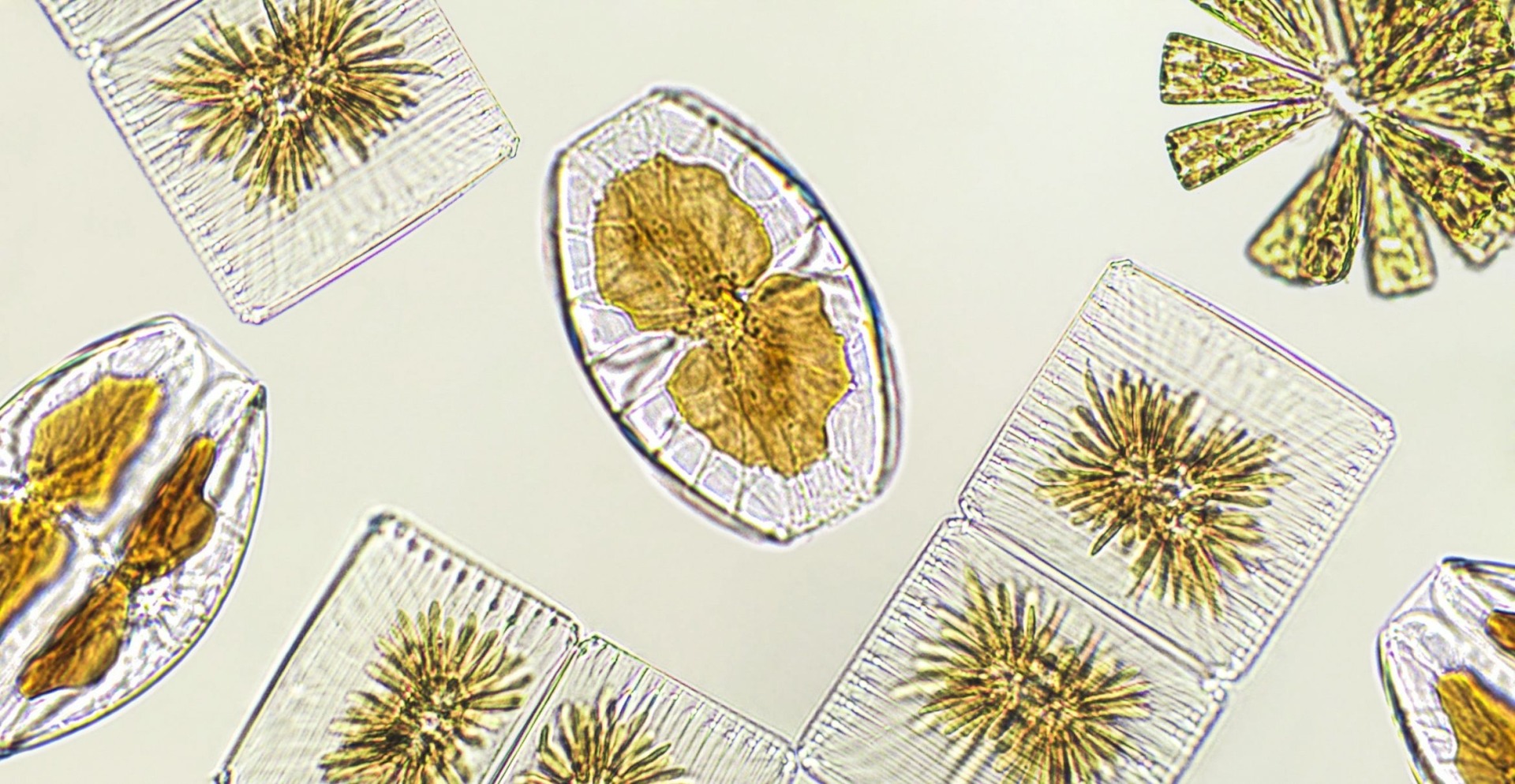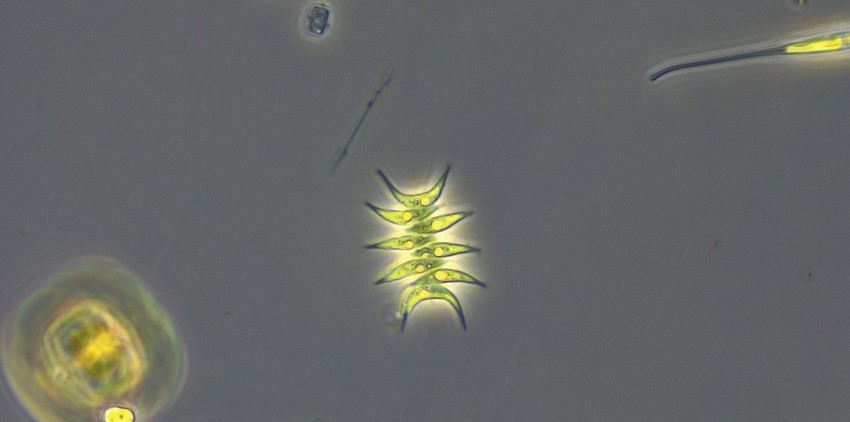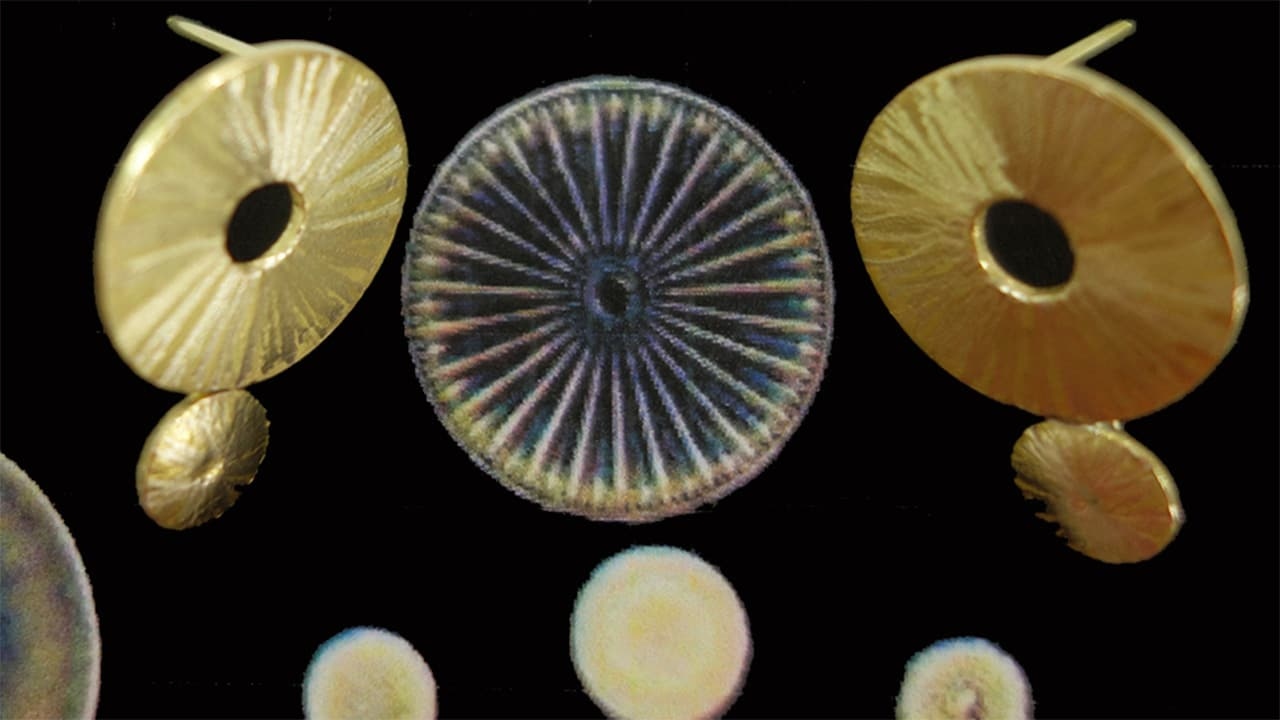Comments
- No comments found

Phytoplankton are microscopic, photosynthetic organisms that drift in aquatic environments.
The connection between phytoplankton and climate change is crucial in the marine food web and contributes to carbon cycling. Their photosynthetic activity helps regulate atmospheric carbon dioxide levels and influences climate patterns.
One-fourth of Earth’s life is in the deep ocean, and 91% of these species are still unknown. Phytoplankton blooms occur when conditions like abundant sunlight, nutrients and optimal temperatures support the rapid growth of phytoplankton. While some are natural and essential for marine ecosystems, excessive ones can have detrimental effects.
Large blooms may deplete oxygen when the phytoplankton decompose, leading to "dead zones" harmful to marine life. Certain types of phytoplankton can produce toxins, posing risks to aquatic organisms and even human health if they enter the food chain.
These blooms have significant implications for climate health. Here are some examples.

Carbon sequestration is nature's way of capturing and storing carbon dioxide, a major greenhouse gas contributing to climate change. Here's how it works.
Phytoplankton use sunlight to transform carbon dioxide and water into organic compounds, primarily carbohydrates. This process sustains phytoplankton life and is a significant mechanism for pulling carbon dioxide out of the atmosphere.
They are also a foundational part of the marine food web. When consumed by other organisms, the stored carbon is transferred through the food chain, influencing the carbon balance in aquatic ecosystems.
The biological pump is a natural system in the ocean that helps store carbon for the long term. It's crucial for managing carbon distribution, affecting carbon dioxide levels in the atmosphere and influencing the climate.
The inorganic carbon suspended in the deep ocean is about 70 times more than in the atmosphere. The sinking of leftover bits from phytoplankton is at the heart of the biological pump. These plants, found near the ocean surface, absorb carbon dioxide.
Their remains sink into the deep ocean when they die or get eaten, taking carbon away from the surface waters. This process is vital for long-term carbon storage, helping regulate atmospheric CO2 levels and balance the planet's cycle.
Atmospheric CO2 levels refer to the concentration of carbon dioxide in Earth's air. Here are some that should be monitored and understood.
Phytoplankton blooms have an influential role in reducing atmospheric CO2. As these tiny organisms grow more, they absorb more carbon dioxide during photosynthesis, helping to lower CO2 levels in the air. This natural process contributes to maintaining a balance in carbon concentrations and lessening the impact of excess amounts on the climate.
Some suggest using phytoplankton as part of geoengineering solutions for climate change. Encouraging growth through targeted nutrient additions in specific ocean areas will boost their ability to capture CO2.
While this idea has potential, it's crucial to consider its ecological and ethical implications, as intentionally manipulating ecosystems raises concerns that need thorough examination.

Here's the role of phytoplankton in oxygen production.
The oxygen phytoplankton produces is vital for marine life, supporting the entire ocean ecosystem. Everything from tiny organisms to large whales relies on this oxygen.
Their contribution extends globally, producing around half of the world's oxygen. Preserving this balance is essential for the health of marine ecosystems and the overall oxygen equilibrium on Earth.
There are thousands of diverse phytoplankton species, including diatoms, coccolithophores and bacterioplankton. Cyanobacteria and algae are also categorised as phytoplankton. They all perform photosynthesis, but some get extra energy by eating other organisms.
Phytoplankton can overpopulate, mainly due to human activities, which causes trouble. Excessive decay uses oxygen, leading to low oxygen levels in the water, a problem known as hypoxia.
Oceanic dead zones, where oxygen is scarce, spell disaster for marine life. Fish and other creatures struggle to survive, disrupting the marine food web and causing mass deaths. The problem extends beyond the affected areas, impacting migration patterns and species distribution.
Human actions, like improper waste disposal and agricultural runoff, contribute to these dead zones. Solving this issue requires sustainable practices to protect marine ecosystems from the harmful effects of oxygen-depleted dead zones.
Phytoplankton and climate change are connected. Here’s how they affect each other.
Phytoplankton interact with the atmosphere, affecting cloud formation and Earth's climate. Their emissions, gases and particles contribute to creating aerosols. These aerosols influence cloud properties, forming a loop that impacts global weather patterns and the environment.
Phytoplankton releases dimethyl sulfide (DMS), critical in creating cloud condensation nuclei (CCN). As DMS enters the air, it transforms into particles that act as seeds for water droplets, leading to cloud formation.
This process is significant because changes in levels, influenced by factors like nutrients and climate conditions, can affect DMS emissions. It influences cloud characteristics and the relationship between phytoplankton and climate change.
Climate change, specifically global warming, poses significant threats to phytoplankton dynamics. Rising sea temperatures alter these microscopic organisms' conditions, potentially affecting their growth patterns and species composition.
Climate change is expected to cause significant changes in the locations where marine plankton species are found. Some regions may experience an increase in phytoplankton abundance, while others may witness a decline.
Changes in nutrient availability, ocean stratification and water temperature can influence the distribution and abundance of different species. The timing and duration of blooms may be impacted, disrupting the delicate balance of marine ecosystems.
Shifts in the composition of their communities can have cascading effects on the entire marine food web, influencing the abundance and distribution of other aquatic organisms.
Understanding the intricate interactions between climate change and phytoplankton is crucial for developing accurate models and predictions. This requires considering how shifts in phytoplankton communities might impact marine ecosystems and the climate.
A comprehensive understanding of these interactions is essential for anticipating and mitigating the broader ecological consequences of climate change. This knowledge enables scientists and policymakers to make informed decisions about conservation strategies, sustainable resource management and climate change adaptation measures.
Phytoplankton blooms are essential for climate health. Understanding and preserving these microscopic organisms is vital for maintaining a balanced and healthy environment.
Emily Newton is the Editor-in-Chief of Revolutionized. She is a science and technology journalist with over three years covering industry trends and research.
Leave your comments
Post comment as a guest